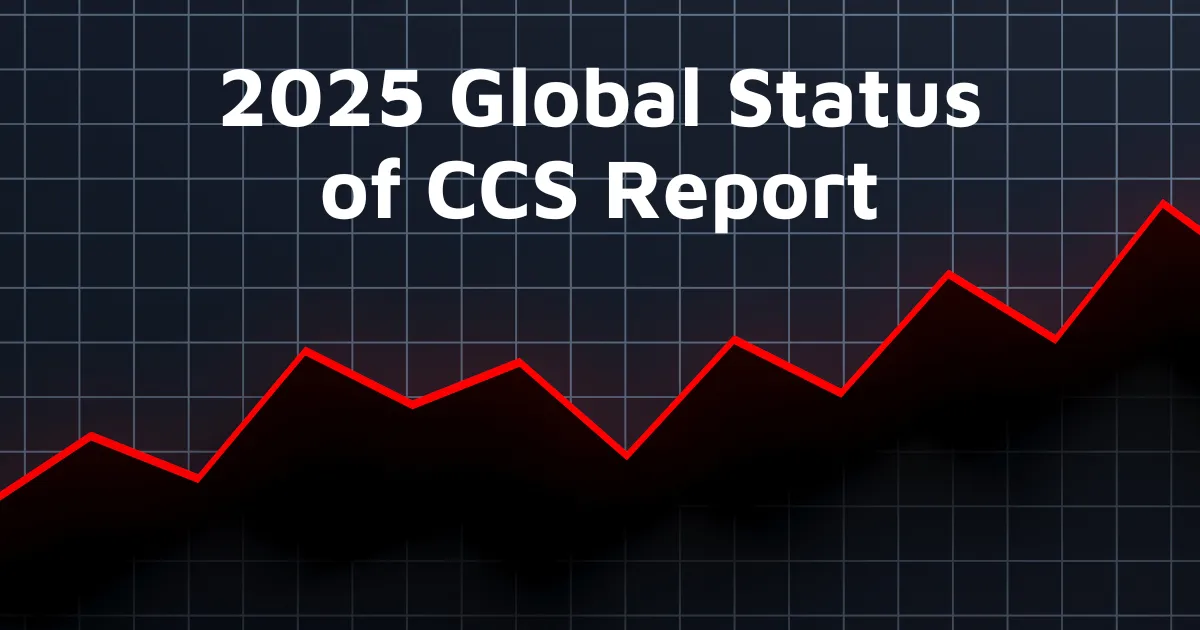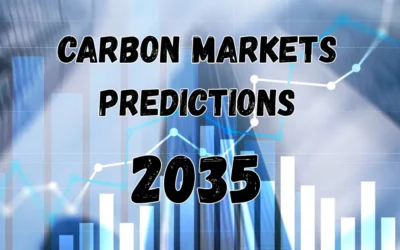Anna Jacobs
Beyond the Smokestack: Why the 2025 Global Status of CCS Report is Only Half the Climate Story
If you’re a sustainability leader, the release of the annual Global CCS Institute report is a landmark event. This year is no different. The 2025 Global Status of CCS Report, titled “Staying the Course,” paints a picture of a technology hitting its stride. It’s a story of progress, of massive steel and concrete projects scaling up to capture carbon dioxide at the source—the smokestacks of our most essential, hard-to-abate industries. And this progress is something to be celebrated.
The report highlights a record year for deployment, with 77 industrial CCS projects now operational and another 47 under construction. Driven by stronger policy and new waves of investment, the world’s capacity to capture CO₂ is growing at an exponential rate. The projections are staggering: by 2030, the capture capacity of these facilities is expected to be five times higher than it is today. This is the technology that will allow industries like cement, steel, and natural gas processing to decarbonize, a critical step in preventing the climate crisis from getting worse.
But what if preventing it from getting worse isn’t enough?
The unspoken truth behind the industrial hum of CCS is that it’s fundamentally a defensive strategy. It’s a powerful shield against new emissions entering our atmosphere. It is, however, a shield that does nothing about the trillions of tons of carbon we’ve already pumped into the air since the Industrial Revolution began.
This is where the conversation must evolve. For visionary companies and their leaders, the goal isn’t just to stop polluting; it’s to start restoring. It’s about moving beyond mere abatement and embracing active carbon removal. This is the other half of the climate story—the one written not in concrete and pipelines, but in the rich, living soil beneath our feet.
The Great Divide: Carbon Removal vs. Emissions Abatement
Understanding the distinction between industrial CCS and the work we do at Dynamic Carbon Credits is crucial for any leader serious about making a genuine impact. Think of it this way:
Carbon Capture and Storage (CCS) is like putting a high-tech filter on a factory smokestack. It captures the pollution as it’s being made, liquefies it, and pipes it deep underground to be locked away in geological formations. It is an essential, powerful, and necessary tool for industrial decarbonization. It stops the problem from growing at the source.
Agricultural Carbon Sequestration, on the other hand, is like turning the planet’s fields and farms into a vast, powerful sponge. It’s a biological process that actively soaks up the carbon pollution already in the atmosphere and puts it back where it belongs: in the earth. This is Carbon Dioxide Removal (CDR). It’s not just stopping the damage; it’s beginning the healing.
“For decades, the climate conversation has been dominated by industrial solutions,” says Beau Parmenter, CEO of Dynamic Carbon Credits. “And those solutions are critical. But they are incomplete. True leadership in sustainability means looking beyond the fencelines of our factories and recognizing that our planet’s oldest and most powerful technology—nature itself—is the key to not just slowing the climate crisis, but reversing it. We’re not just offering carbon credits; we’re offering a stake in the restoration of our planet.”
The Living Machine: How We Sequester Carbon in the Soil
So, how does it actually work? Our process isn’t built, it’s grown. It’s a symphony of regenerative agriculture, cutting-edge science, and a deep respect for natural cycles.
- Regenerative Agriculture: The Foundation It all starts with partnering with farmers to shift away from conventional, extractive agriculture towards regenerative practices. This means no-till farming to keep the soil structure intact, planting cover crops to protect the soil and keep it rich with microbial life, and complex crop rotations that build, rather than deplete, soil health. These practices alone begin to turn farmland from a carbon source into a carbon sink.
- Photosynthesis Power: Plant-Based Direct Air Capture (DAC-P) This is nature’s form of Direct Air Capture. Every plant we cultivate pulls CO₂ from the air through photosynthesis. But instead of just a seasonal cycle, we are focused on where that carbon goes. Through regenerative practices, a significant portion of that captured carbon is transferred through the plant’s roots deep into the soil, where it becomes stable organic matter. This isn’t a temporary offset; it’s a long-term deposit into the planet’s soil carbon bank.
- Biochar: Locking Carbon Away for Centuries This is where we supercharge the process. We take agricultural waste—like corn stalks or wood scraps—that would otherwise decompose and release its carbon back into the atmosphere, and we transform it. Through a process called pyrolysis (heating the biomass in a low-oxygen environment), we create biochar, a form of pure, stable, porous carbon.
When this biochar is added back into the soil, it acts as a permanent carbon locker, keeping that CO₂ out of the atmosphere for hundreds, even thousands, of years. But it does so much more. The porous structure of biochar acts like a coral reef for the soil, providing a home for beneficial microbes, retaining water, and reducing the need for chemical fertilizers. It makes the soil healthier, the farms more resilient, and the carbon sequestration more permanent.
The Ripple Effect: Benefits for People and Planet
This is the beautiful truth that the 2025 Global Status of CCS Report can’t capture. Industrial CCS has one job: store carbon. Our method has dozens. When a corporation invests in our agricultural carbon removal credits, they are funding a powerful cascade of co-benefits:
- For the Planet: We are rebuilding topsoil, a critical resource we are losing at an alarming rate. We are improving water retention in the soil, making landscapes more resilient to drought. We are reducing methane emissions from agricultural waste and lessening the reliance on synthetic fertilizers that pollute our waterways. We are creating healthier, more biodiverse ecosystems.
- For People: We are providing a vital new revenue stream for farmers and rural communities, rewarding them for their stewardship of the land. We are improving food security by making farmland more productive and resilient. We are creating a more transparent and trustworthy carbon market, one where the impact is visible in the health of the land and the prosperity of its keepers.
In an era of intense scrutiny over greenwashing, where stakeholders demand authenticity, the story of a restored field and an empowered farmer is infinitely more powerful than the story of a pipeline. It’s about creating Additionality—not just in carbon terms, but in human and ecological terms. This is why we champion technologies like blockchain to ensure every credit is transparently tracked from the field to your ledger, providing the trust and integrity the market desperately needs. It’s a commitment to the kind of responsible conduct and transparent reporting that organizations like the OECD advocate for to combat misleading environmental claims.
As you digest the findings of the 2025 Global Status of CCS Report, we urge you to look beyond the industrial horizon. The future of corporate sustainability isn’t just about being less bad; it’s about being more good. It’s about investing in solutions that don’t just solve a math problem in a carbon ledger, but that heal the very ecosystems we all depend on.
The shield of industrial CCS is vital. But the restorative power of the soil—that is where our future grows.






